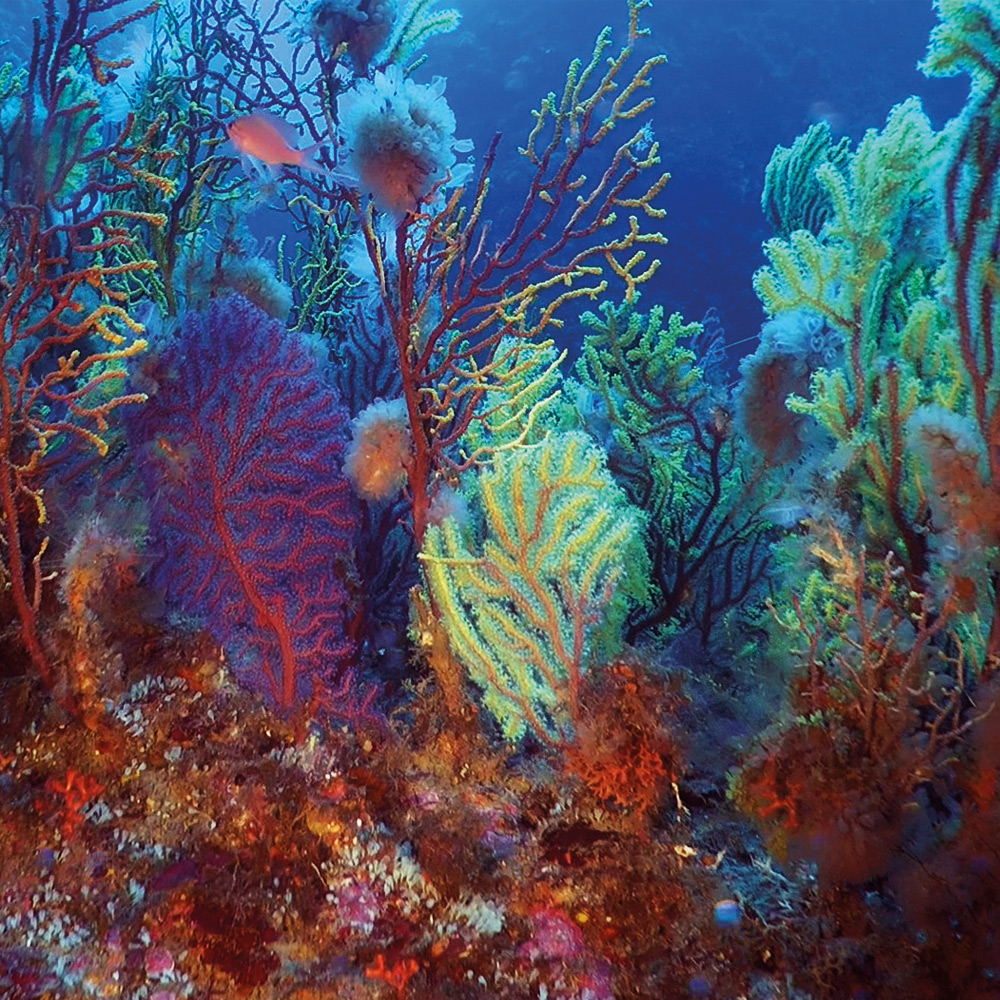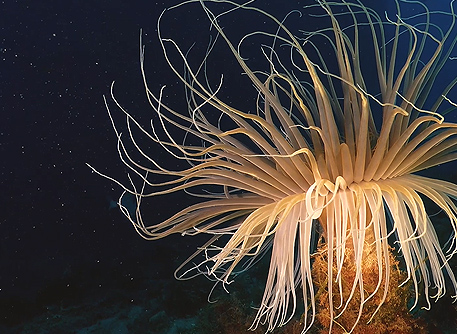Sea bottoms
The village of Scilla is located on an impressive rocky spur overlooking the sea. The sea that breaks on these rocks has unique sea bottoms made by an extraordinary emerged and submerged morphology.
The complex hydrodynamic phenomena and the great variety of life forms make the Scilla sea bottoms real natural paradises of marine flora and fauna. These natural uniquenesses, better known today, have been the inspiration for symbols and myths, which have become part of the history of these territories (including that of Scylla and Charybdis).
The sea bottoms of Scilla include the stretch of sea that goes from Capo Paci to Favazzina and they are characterized by strong currents. Particular phenomena are generated in this area as this is the point of junction between the Ionian and Tyrrhenian seas, that are two seas with different salinity, density and temperature: phenomena such as the alternation between high and low tide that gives rise to strong vortices, developed with such violence that whoever was in the middle of it would certainly fall into the mouth of some sea monster.
On the one hand the currents are the true soul of this corner of the Strait of Messina and they also give to the sea bottoms a great wealth of life, through a constant and sometimes impetuous flow, and on the other hand these currents regulate life underwater.
Such extremely rare concomitances made the marine scenery of sea bottoms difficult to find in other places of the world.
From the geomorphological point of view, the entire coastal area that goes from Santa Trada (in the south of Scilla) to Bagnara (in the north) is characterized by a vast rocky coast with high and continuous sheer cliff faces, interrupted by various valley areas that segment it perpendicularly to the coast.
These rocky walls, also known as "Secche di Scilla", constitute real biological oases, animated by the currents of the Strait and loved by the divers: the “Cento Cipolle” shoal, with the fascinating gorgonias and the cave populated by moray eels and large motellas, the “Paddata”, “Grotticella”, the “Montagna”, the “Costoni di Punta Paci” and also “Sotto Al Castello ”, a shoal defined in this way because it takes place under the cliff.
If you just dive a few moments into the clear waters of Scilla you will be enchanted by the scenery that appears at your eyes.
Between 35 and 65 meters deep, the sunlight highlights the beauty of the red and yellow Gorgonians. On the bottom you can meet snappers, saragos, octopuses and starfishes among the ravines. In the less luminous areas is it possible to see red fish, orange astroides, madreporas and the yellow leptosamnias. In the first months of the year it is possible to find dories, groupers, moray eel, damselfish and monkfish in this areas.
Between 50 and 110 meters deep, there is the largest colony of black coral in the world, a species now considered protected according to its delicacy and its sensitivity to environmental changes: it has branches similar to white tufts white, strongly branched and only the heart is black.
The Strait of Messina, between Scilla and Charybdis, is an obligatory point of passage for the migrations and the movements of the Cetaceans, such as all the species of dolphins existent in the Mediterranean sea, the fin whales and the sperm whales.
There are also some species of shark and large pelagic species such as tuna, the albacore, the atlantic bonito, the imperial gar and the legendary swordfish. Swordfish fishing is an ancient art in Scilla that dates back to the second century B.C. linked to some magical secular rituals (the most suggestive of them is the one of the "cardata da cruci": after the capture it is engraved a cross on the cheek of the Pescespada as a sign of its value in the fight for life).









